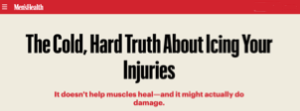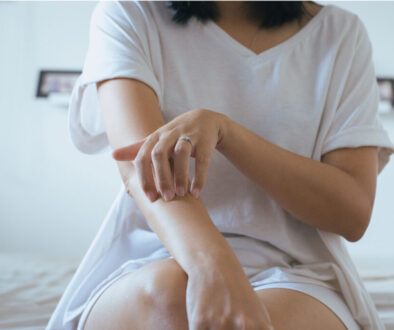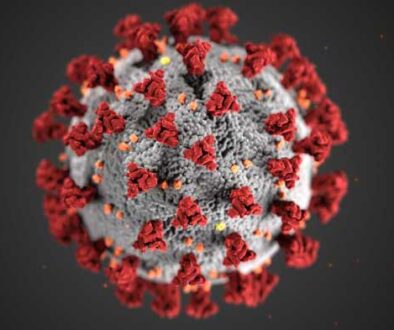Icing Injuries


In treating an injury such as a sprain, fracture, or after surgery, I’ve been saying for years that the best way to speed up your recovery is to stop icing, and start using gentle heat, Chinese herbal medicine, and herbal liniments. This will boost circulation and speed healing. Ten years ago, when I started practicing, this idea was considered by Western medicine practitioners (physicians, nurses, Physical Therapists, Athletic Trainers, Massage Therapists, etc.), to be heretical, but today that sentiment is slowly changing.
I recently came across this article in Men’s Health Magazine, which explains that there is no solid evidence to support the use of icing in your recovery.
Here are a few key quotes:
- …no piece of published, peer-reviewed research has shown definitively that ice is beneficial to the healing process.
- Ice can delay healing, increase swelling, and possibly cause additional damage to injured tissues.
- In “1978 … Harvard physician Dr. Gabe Mirkin coined the term “the RICE protocol.” based not on research, but on a random observation. His blog post on why ice delays recovery he says: “My RICE guidelines have been used for decades, but new research shows rest and ice actually delay healing and recovery.”
Kudos Dr Mirkin, for admitting you were wrong.
In summary, stop icing.
Instead, improve circulation to recover faster.
If you want to read my detailed explanation including the TCM (Traditional Chinese Medicine) perspective, read on…
Let’s first look at the conventional wisdom on icing, which claims:
- “It stops pain!”
- “It reduces inflammation!”
- “It reduces swelling!”

Are Pain, inflammation and swelling bad?
They can be uncomfortable (and sometimes even unbearable). From an evolutionary perspective, they appear to be useful. Imagine a prehistoric hunter who sprained his ankle out on the savannah … the ankle is swollen into a “splint” to prevent further movement and damage, and to help flush the damaged cells away, the heat (inflammation) makes the area inhospitable for bacteria, thus preventing infections, and the pain gives him feedback on how not use it to limp himself home.
That said, as modern humans, we aren’t under the same limitations or risks in our lives, so from my perspective, we want to stop the pain and recover as quickly as possible.
Does icing stop pain? – Cold slows and reduces nerve impulses so you will get temporary pain-reduction, but at the expense of delayed healing.
Does icing reduce swelling? – Basically, no… The swelling occurs from increase blood-flow (white blood cells flooding the area to fight infection and clean up damage), and the resulting lymphatic fluid meant to be eventually sent back through the lymphatic system for filtering and elimination of the waste from the body.
Icing can constrict blood vessels (thus preventing your body from fighting potential infections in the area). That may prevent swelling if it hasn’t occurred yet, but once swelling has already occurred, icing will not help. This is because the lymphatic system moves fluids via physical activity (muscles contracting and relaxing, thereby pumping the lymph out of the area). Icing will thicken fluids and harden tissues. Meanwhile your own body is trying to warm the area and clean up and remove cellular debris via the lymphatic system. The cold is working against the body’s efforts.
Does it reduce inflammation? Yes, but do we want that? The increased heat from inflammation is the body’s way of killing off invasive pathogens, yet we are shutting it down. We don’t want to stop the acute inflammation. The inflammatory process is part of the body’s healing process. It’s temporary, and necessary.
This mantra that “inflammation is bad” is without context. There’s a difference between chronic systemic inflammation (from a poor diet/stress), and localized acute inflammation from an injury. In both cases, inflammation the body’s normal healing response to damage. So we need to resolve the source of inflammation for the body to stop trying to heal itself with inflammation. Shutting down the inflammation alone is fighting against the body’s natural desire to heal.
TCM perspective:
One of the key concepts in TCM (Traditional Chinese Medicine) is that warmth means function in the body, and cold means lack of function. (eg: When we are dead and no longer functioning, we are no longer warm.) When we have a cold limb, there’s no blood flow, and little to no functioning of the limb. So, we need to protect our bodies from cold, because it shuts down function. Cold damages the Yang (function) in the body.
What does cold do? – it congeals fluids, (lymph and blood), it slows down metabolic processes (reduced cellular activity), it shuts down the enzymatic processes which rely on a certain temperature range to work, and it constricts vessels and reduces normal circulation. Cold shuts down the body’s normal healing functions.
There are of course specific extreme cases of where the immune system overreacts and we would want to reduce massive inflammation which can cause tissue damage. But this is not the norm, but rather a case for the ER. Most of what we see day-to-day is a basic injury, or post-surgical healing.
We should be:
- gently increasing circulation
- gently warming the area
- gently helping the body to flush cellular damage and reduce swelling
This is where TCM has some wonderful tools to support the body, including: acupuncture, moxa/TDP lamps, herbal topical liniments, and herbal internal medicines.
Let’s assist the body in doing what it has evolved to do, and get the fastest relief with minimal pain.



